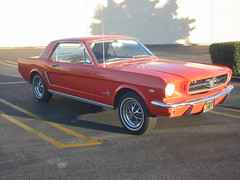Common sense index funds
 The message of The Little Book of Common Sense Investing, by John Bogle is simple: Buy index funds and you'll do better than most investors. Yet the book counts 214 pages. Each chapter almost reads like a FAQ (frequently asked question). When it comes to investing, at the end, it all comes down to a single number: how much is left over.
The message of The Little Book of Common Sense Investing, by John Bogle is simple: Buy index funds and you'll do better than most investors. Yet the book counts 214 pages. Each chapter almost reads like a FAQ (frequently asked question). When it comes to investing, at the end, it all comes down to a single number: how much is left over.
"It may not be as exciting, but owning the classic stock market fund is the ultimate strategy. It holds the mathematical certainty that marks it as the gold standard in investing, for try as they might, the alchemists of active management cannot turn that own lead, copper or iron into gold. Just avoid complexity, rely on simplicity, take costs out of the equation, and trust the arithmetic."
"Remember, O stranger, arithmetic is the first of the sciences and the mother of safety." (Louis D. Brandeis, 1914)
"The two greatest enemies of the equity investor are expenses and emotions"The lessons in the book are clear:
rule 1: Own businesses; don't speculate on emotions
- Total investment returns - the gains made by businesses - were remarkably steady: 8 - 13% each year and averaging 9.5%.
- The speculative return has added just 0.1% to the annual investment return.
Don't look for the needle. Buy the hay stack.
- Only 3 out of 355 equity funds (since 1970), or 8/10 of 1%, have survived and mounted a record of sustained excellent.
- During the 39 year period (1968 to 2006) the S&P500 index fell into the bottom quartile of large cap core funds, in only 2 years and has not done so since 1979. The index has outpaced the average fund in 26 of the 35 years, including 11 of the past years.
The "all-in" cost of equity fund ownership can come to as much as 3-3.5%/year. This includes the expense ratio, sale charges and initial sale charge. Compounding over 50 years, the investor who puts up 100% of the capital and assumes 100% of the risk, earned only 31% of the market return.
For 1980 - 2005:
- S&P returned 12.5%/yr; $10,000 will grow to $170,800 before inflation (3.3%/yr); after inflation: $76,200.
- Average Fund returned 10%/yr; $10,000 will grow to $98,200 before inflation (3.3%/yr); after inflation: $40,600
- The impact of compounding costs over 25 years is a difference of 53%!
There is a investment time lag which costs investors dearly. When you calculate it out, the $10,000K investment will grow to:
- S&P invested: $76,200 (after inflation)
- Average Fund: $16,700 (after inflation)
- The impact of costs, counter productive market timing and selection penalties over 25 years is enormous: 22%! of what could have been if invested in an index fund.
Continuing the calculation:
- S&P invested: 12.3% return - 0.6% (tax cost) - 3.3% (inflation) = 8.4%; $10,000 grows to $65,000.
- Average fund: 10.0% return - 1.8% (tax cost) - 3.3% (inflation) = 4.9%; $10,000 grows to $23,100
- Again the impact is substantial when compounded over many years.
- Serious money account = 95%
Funny money account = 5% - Invest serious money account 100% in index funds
- <>
- 85% S&P index
- 5% small cap index
- 10% value index
- short term bond fund
- inflation linked bonds
- Invest funny money (experiment)
- some in stock
- some in mutual funds
- commodity funds
- Avoid other funancial constructs
- Asset allocation: bond % == your age or (age -10) %






